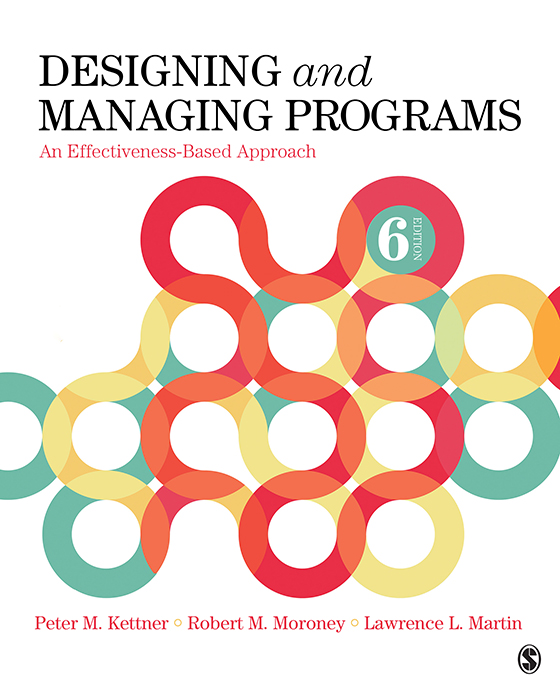Designing and Managing Programs
An Effectiveness-Based Approach
Peter Martin Kettner
Robert M. Moroney - Arizona State University, USA
Lawrence L. Martin - University of Central Florida, USA
This classic text for social work and human services helps readers grasp the meaning and significance of measuring performance and evaluating outcomes. Hands-on and practical, Designing and Managing Programs incorporates the principles of effectiveness-based planning as it addresses the steps of designing, implementing, and evaluating a human services program at the local agency level.
Written by leaders in the field, it guides students through the process from beginning to end. Meaningful examples—from problem analysis and needs assessment to evaluating effectiveness and calculating costs—enhance reader understanding of how concepts are implemented in the real world. The Sixth Edition contains new examples and references, and updates based on changes to federal regulations.
An instructor website at edge.sagepub.com/kettner6e includes essay questions, PowerPoint slides, and suggested assignments designed by the authors.
Available formats
See what’s new to this edition by selecting the Features tab on this page. Should you need additional information or have questions regarding the HEOA information provided for this title, including what is new to this edition, please email sageheoa@sagepub.com. Please include your name, contact information, and the name of the title for which you would like more information. For information on the HEOA, please go to http://ed.gov/policy/highered/leg/hea08/index.html.
For assistance with your order: Please email us at textsales@sagepub.com or connect with your SAGE representative.
SAGE
2455 Teller Road
Thousand Oaks, CA 91320
www.sagepub.com
Instructor Resource Site
http://edge.sagepub.com/kettner6e
Online resources included with this text
The online resources for your text are available via the password-protected Instructor Resource Site, which offers access to all text-specific resources, including editable, chapter-specific PowerPoint® slides and suggested essay questions to accompany the book.
For additional information, custom options, or to request a personalized walkthrough of these resources, please contact your sales representative.
The Sixth Edition contains new examples and references, as well as updates based on changes to federal regulations.
KEY FEATURES:
- An emphasis on diversity teaches students and program planners how to develop a well-rounded program that meets the needs of relevant populations.
- The case example of a domestic violence shelter is used throughout to demonstrate the flow of program development, from initial articulation of its hypothesis through the final stages of evaluation and budget analysis.
- Chapter summaries, additional case examples, and review questions help readers apply concepts to their own program plans.
- Clear and engaging writing makes this book a quick and easy read.
- Hands-on and practical guidance enables readers to apply what they learn to design a social program.
- Practical tables, figures, and examples illustrate key points along every step of the process and help students apply what they read to their own programs.

